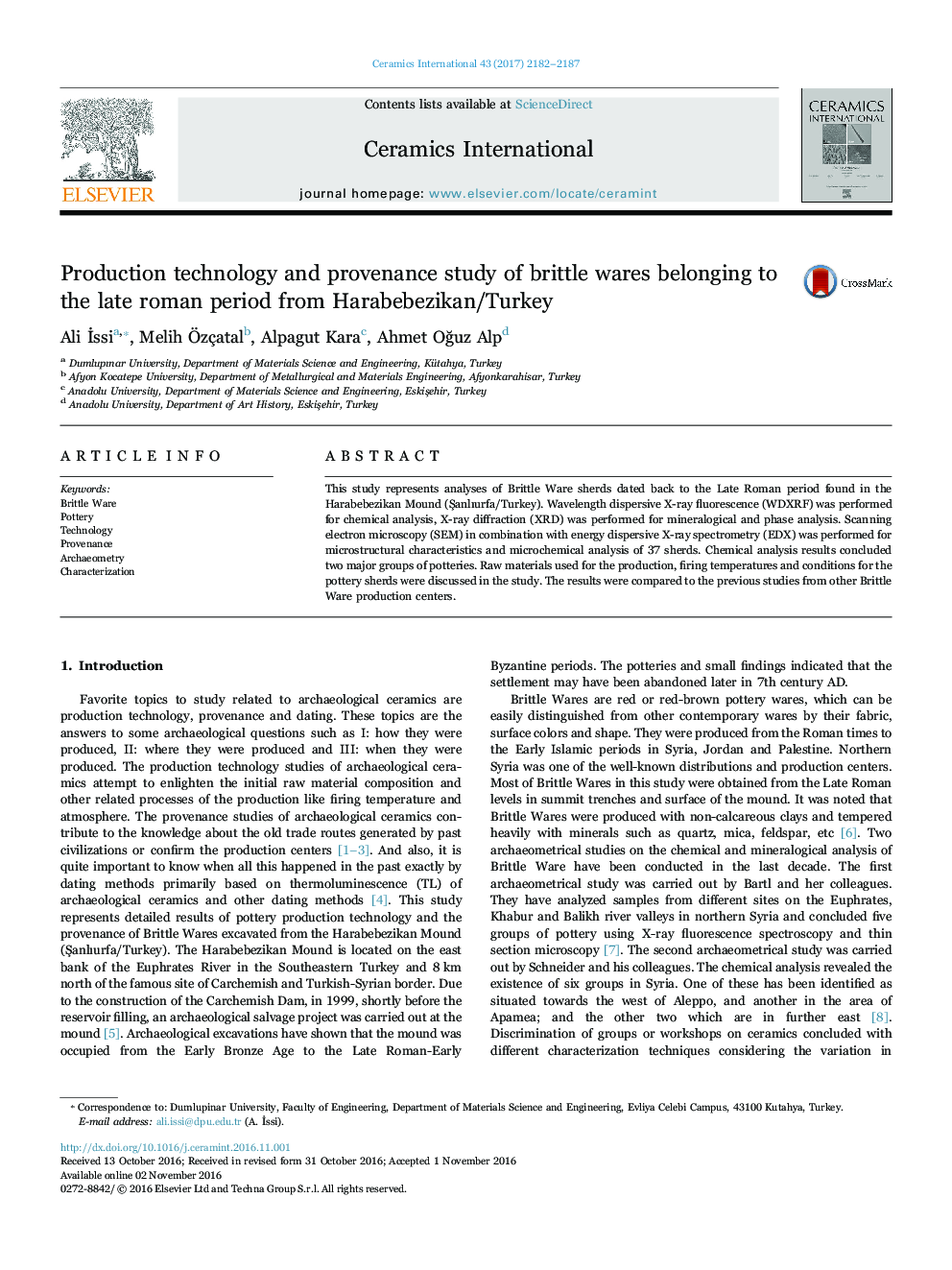| Article ID | Journal | Published Year | Pages | File Type |
|---|---|---|---|---|
| 5438280 | Ceramics International | 2017 | 6 Pages |
Abstract
This study represents analyses of Brittle Ware sherds dated back to the Late Roman period found in the Harabebezikan Mound (Åanlıurfa/Turkey). Wavelength dispersive X-ray fluorescence (WDXRF) was performed for chemical analysis, X-ray diffraction (XRD) was performed for mineralogical and phase analysis. Scanning electron microscopy (SEM) in combination with energy dispersive X-ray spectrometry (EDX) was performed for microstructural characteristics and microchemical analysis of 37 sherds. Chemical analysis results concluded two major groups of potteries. Raw materials used for the production, firing temperatures and conditions for the pottery sherds were discussed in the study. The results were compared to the previous studies from other Brittle Ware production centers.
Related Topics
Physical Sciences and Engineering
Materials Science
Ceramics and Composites
Authors
Ali Ä°ssi, Melih Ãzçatal, Alpagut Kara, Ahmet OÄuz Alp,
